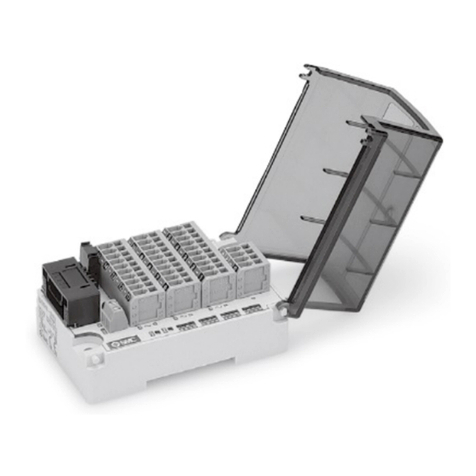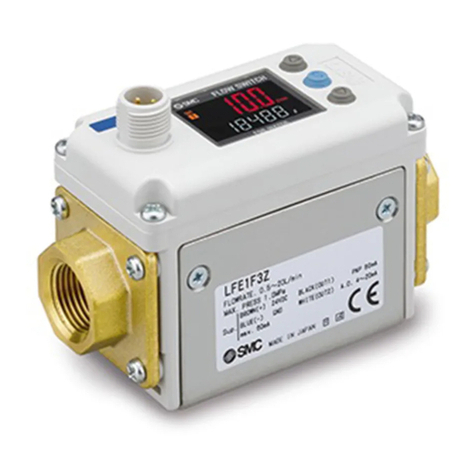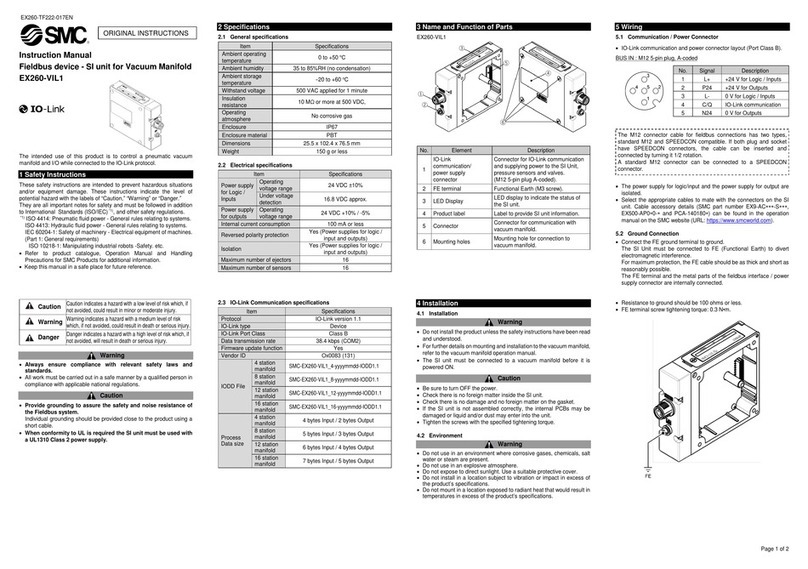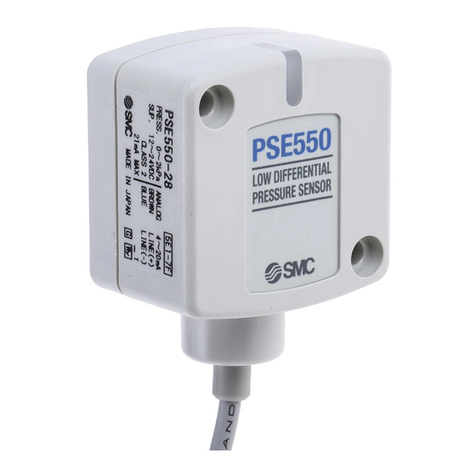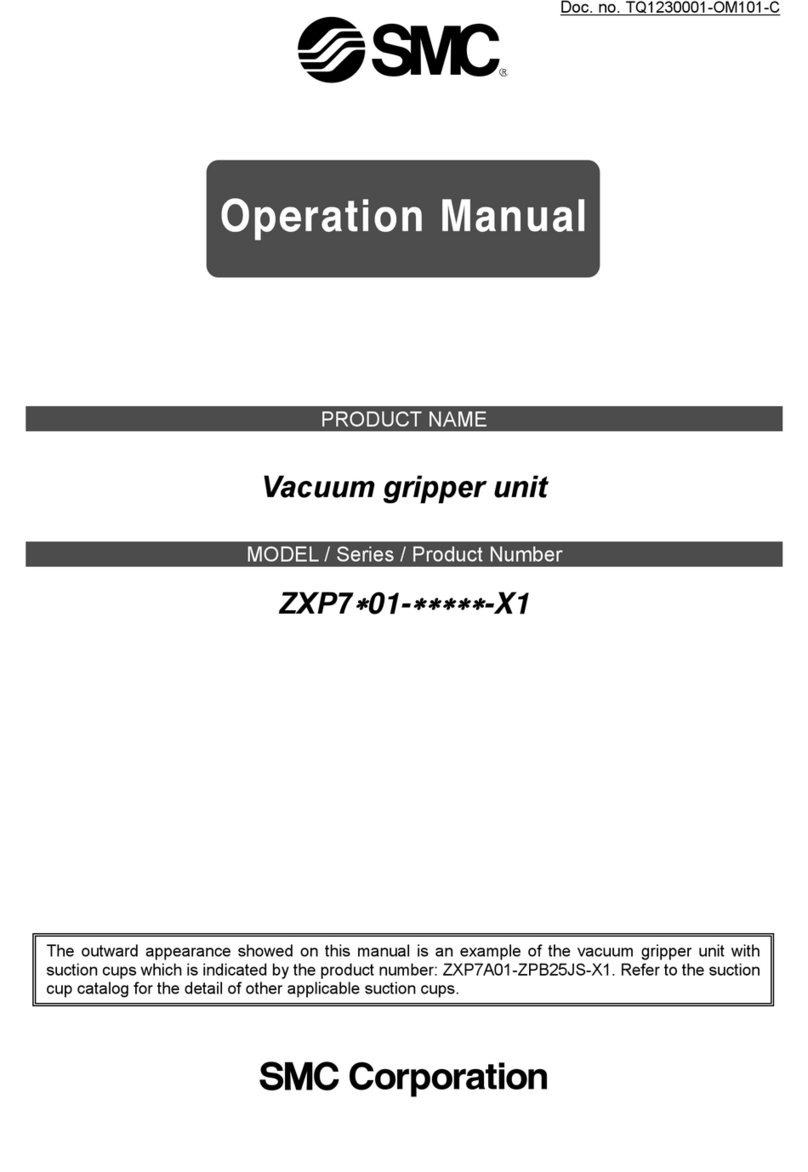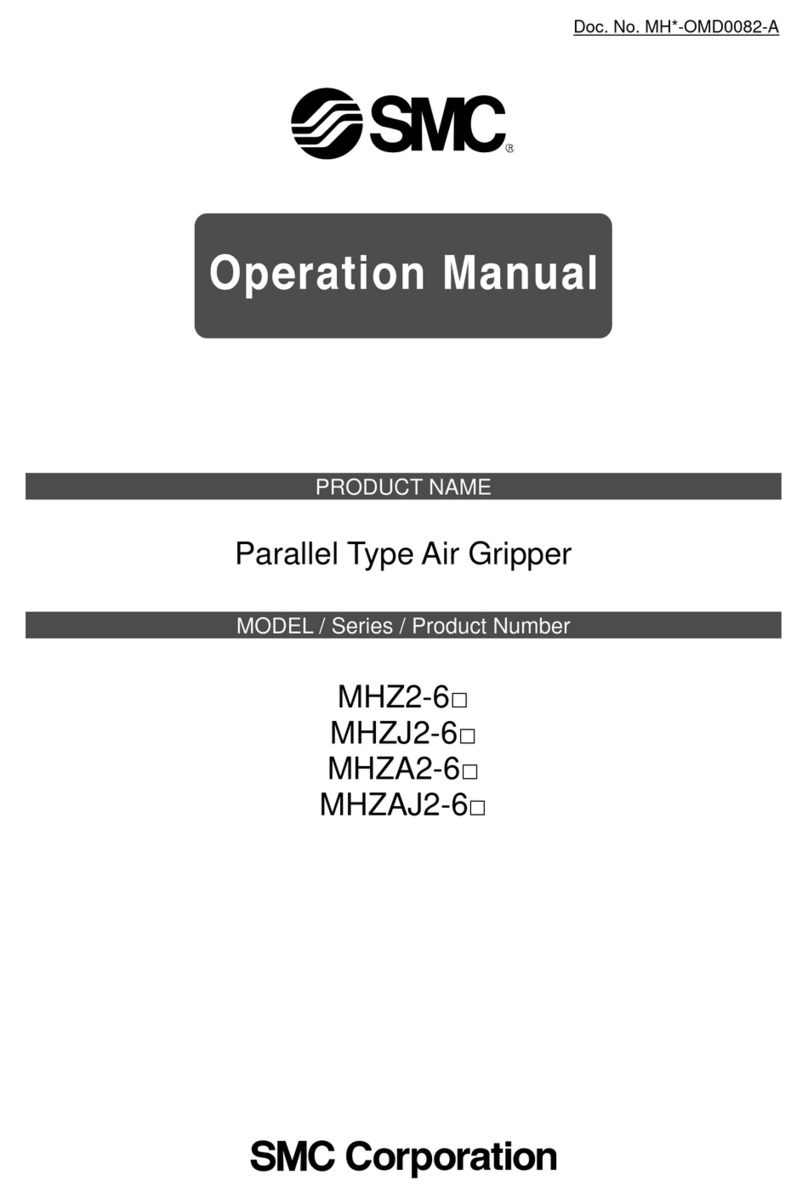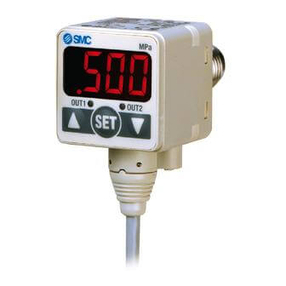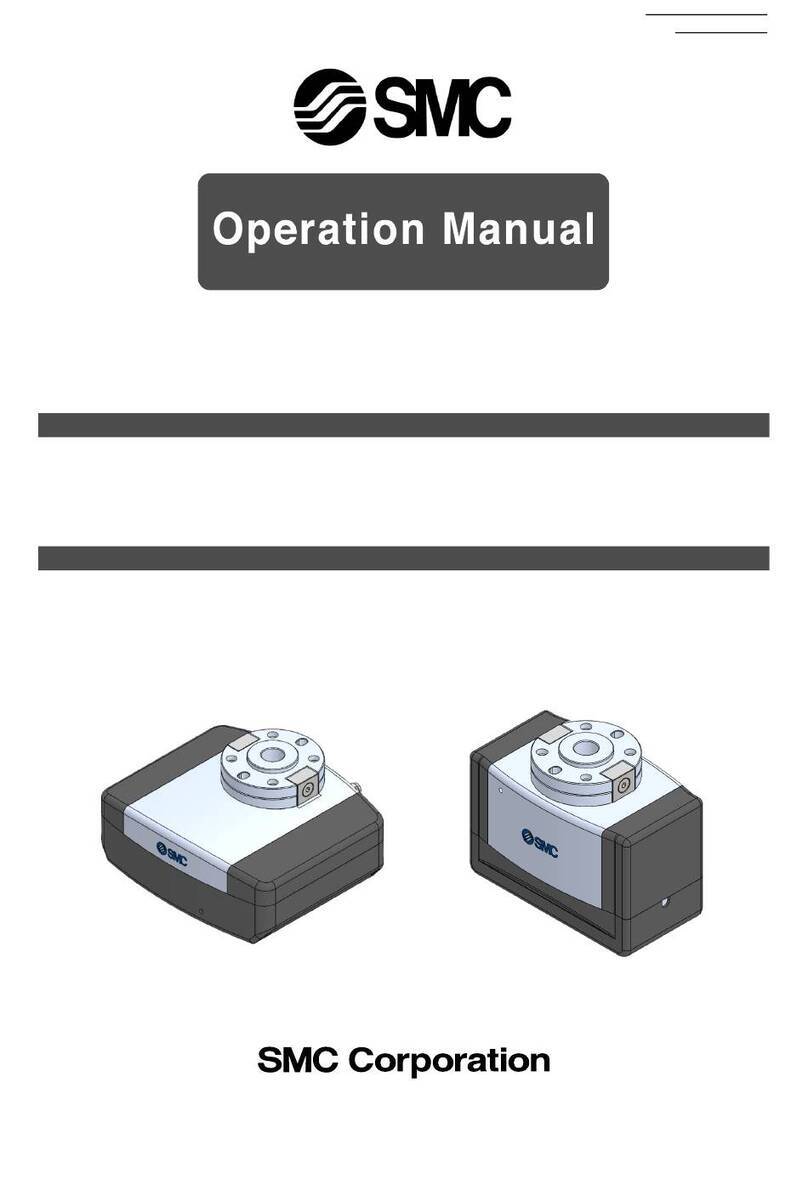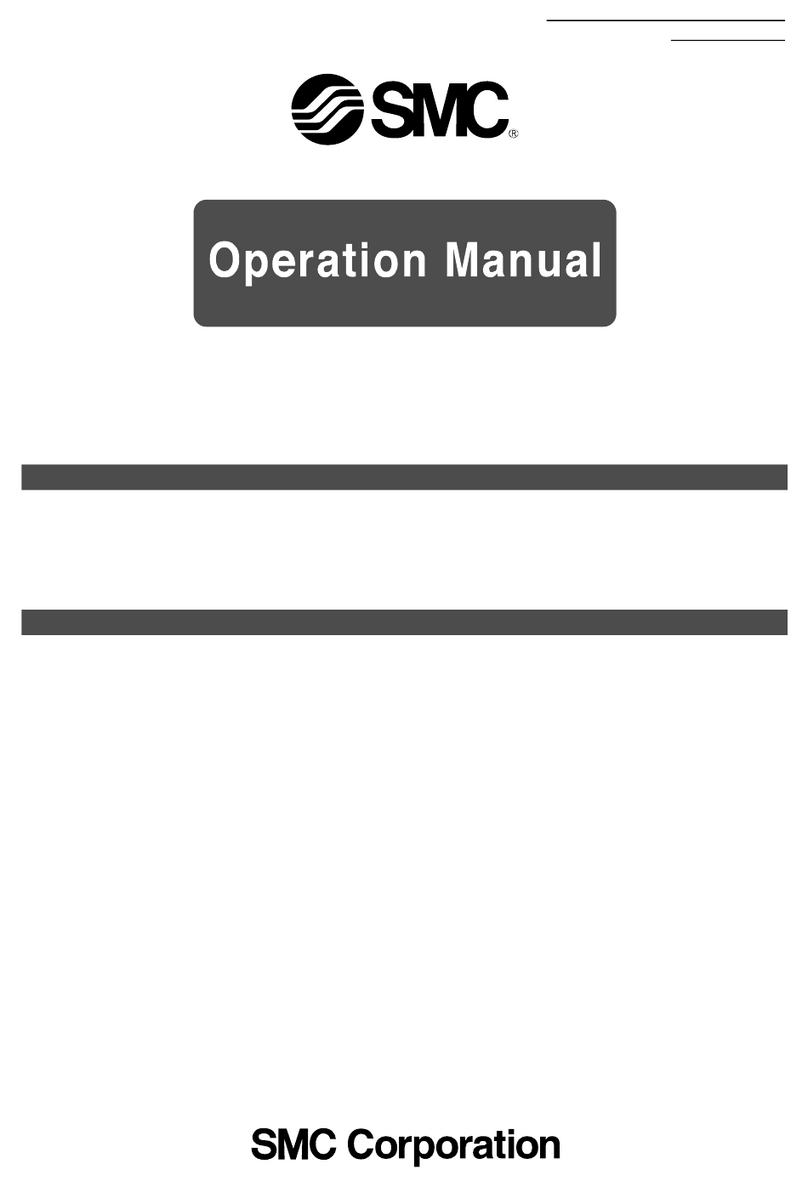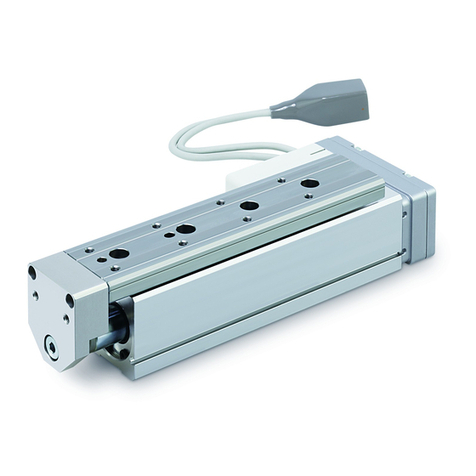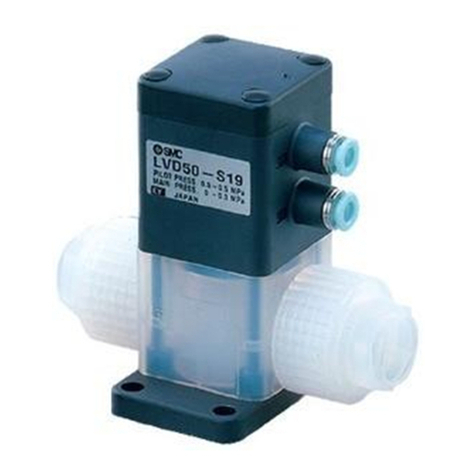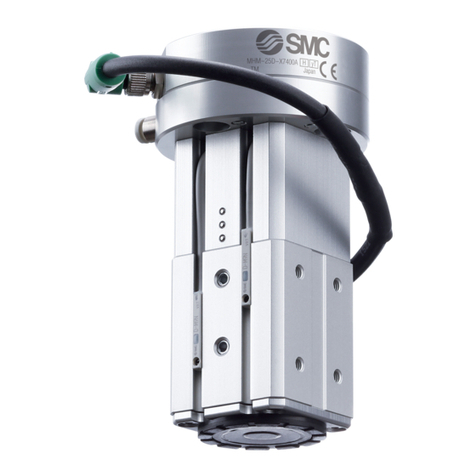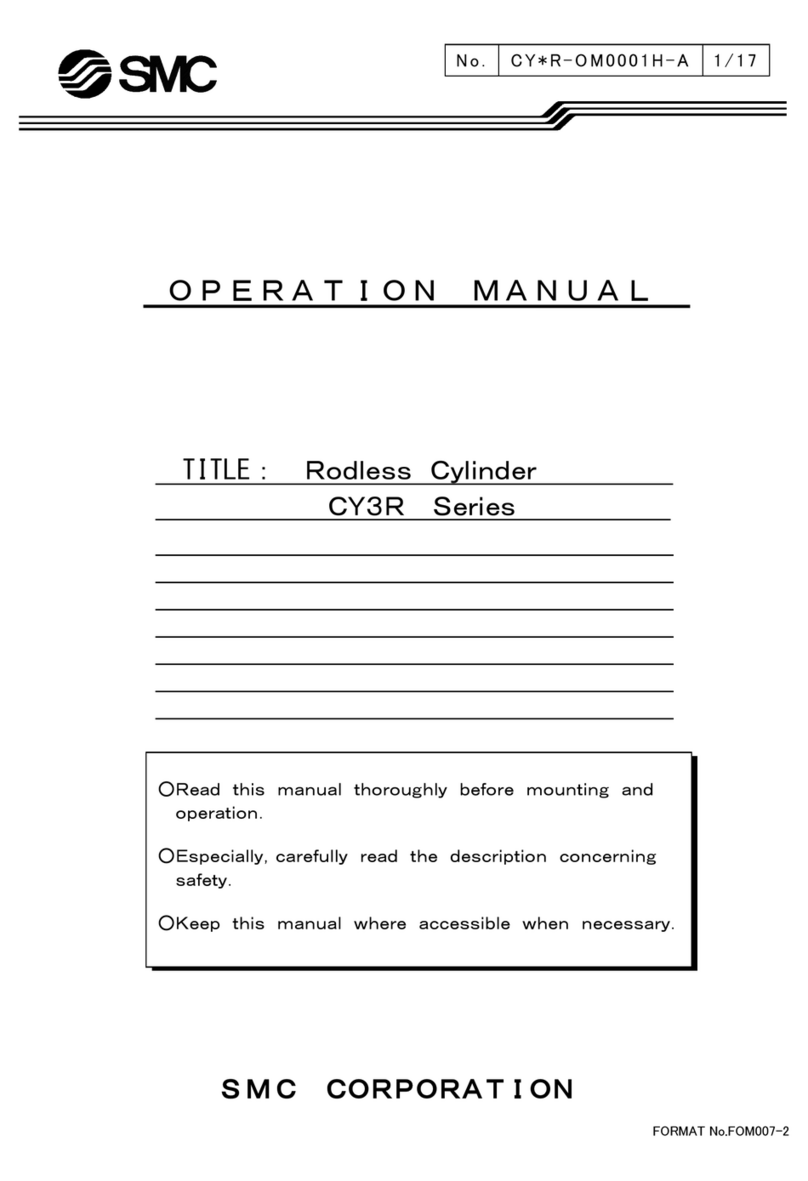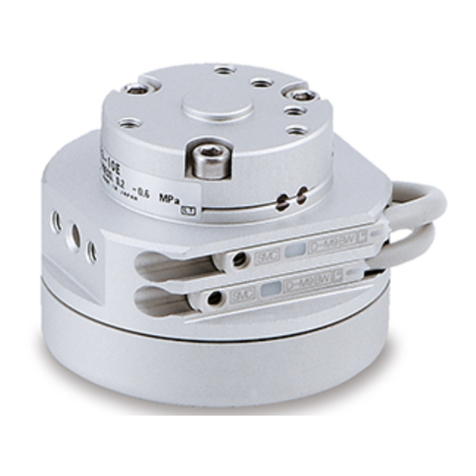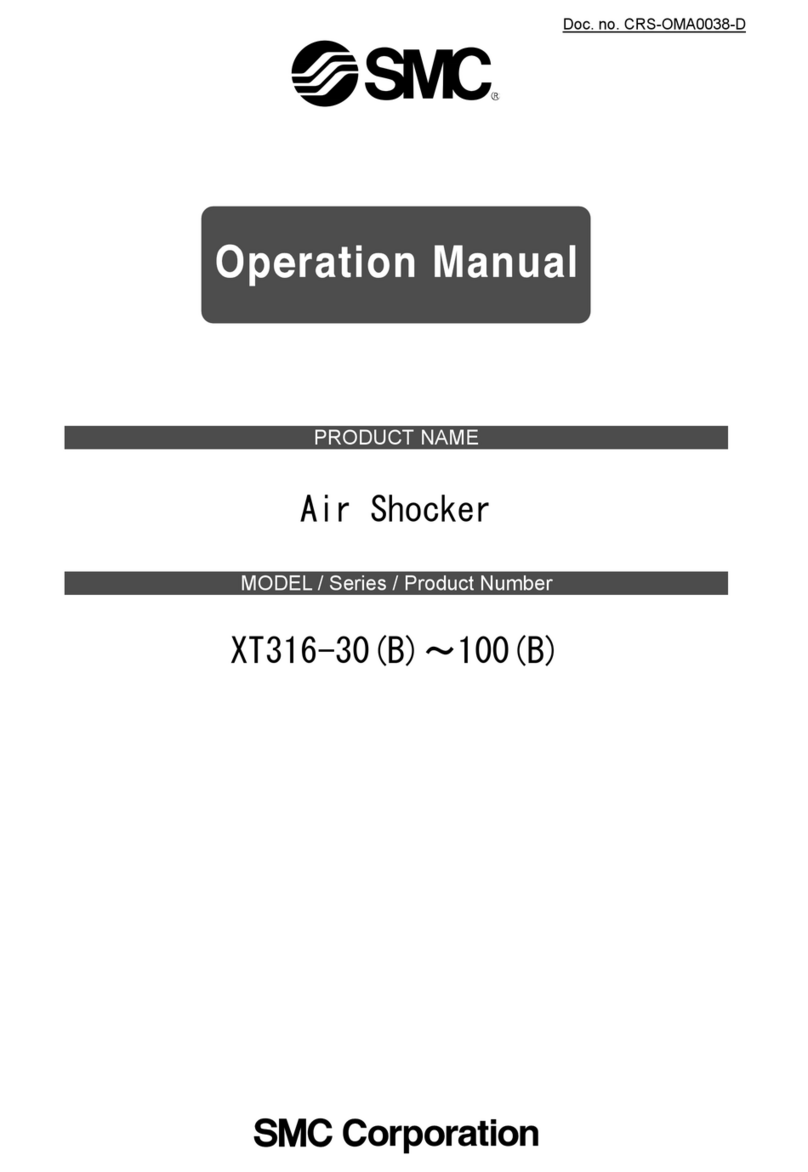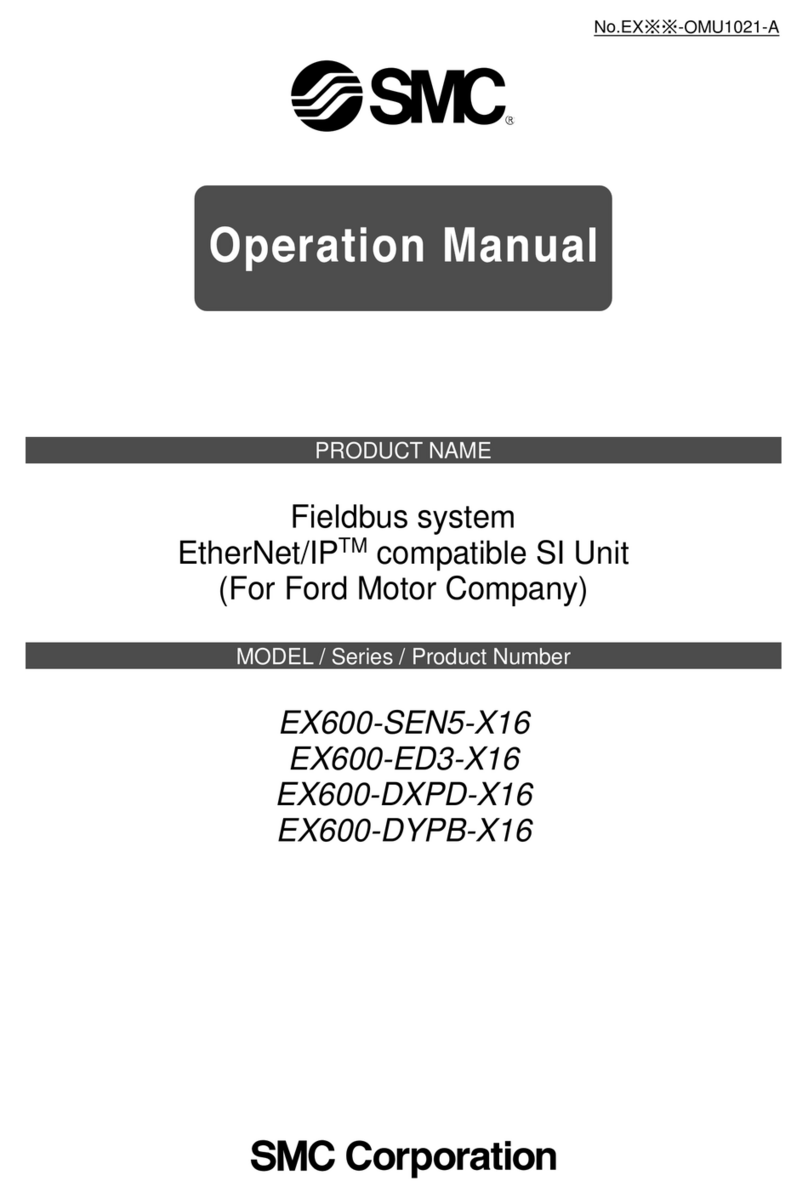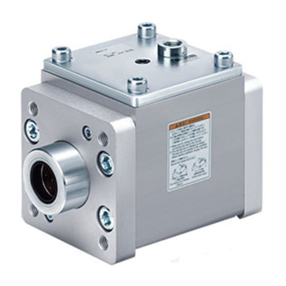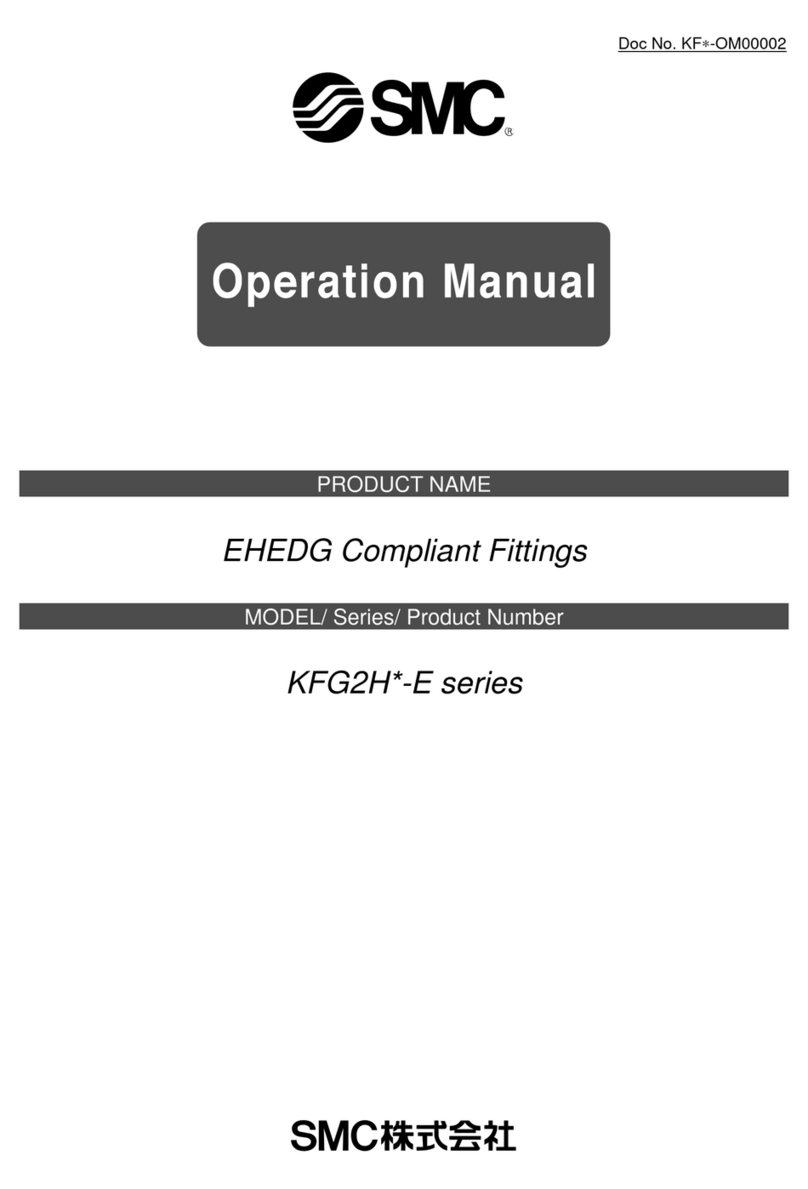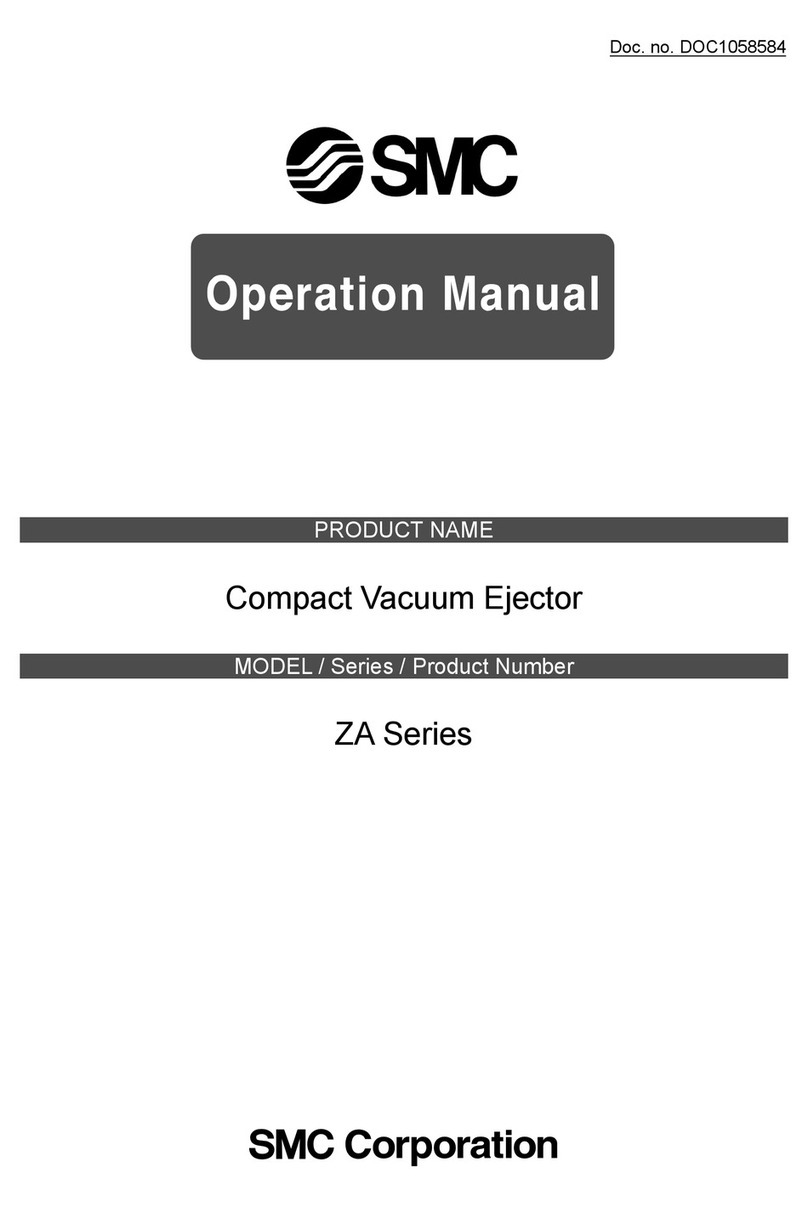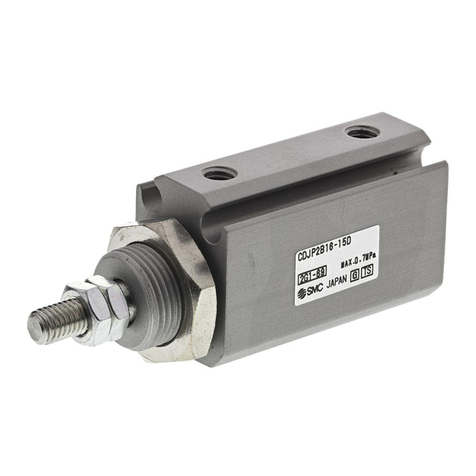-7-
No.EX##-OMA1004
•Product handling
Installation
•Do not drop, hit or apply excessive shock to the fieldbus system.
Otherwise, damage to the product can result, causing malfunction.
•Tighten to the specified tightening torque.
If the tightening torque is exceeded the mounting screws may be broken.
IP65 protection cannot be guaranteed if the screws are not tightened to the specified torque.
• When carrying the vacuum manifold, make sure that the connections are not stressed.
Otherwise, the damage to connections can result. In addition, some combinations of the manifold may be very
heavy, so use more than one person to carry or install the unit.
•Never mount a product in a location that will be used as a foothold.
The product may be damaged if excessive force is applied by stepping or climbing onto it.
Wiring
•Avoid repeatedly bending or stretching the cables or placing heavy load on them.
Repetitive bending stress or tensile stress can cause breakage of the cable.
•Wire correctly.
Incorrect wiring can break the product.
•Do not perform wiring while the power is on.
Otherwise, damage to the fieldbus system and/or I/O device can result, causing malfunction.
•Do not route wires and cables together with power or high voltage cables.
Otherwise, the fieldbus system and/or I/O device can malfunction due to interference of noise and surge voltage
from power and high voltage cables to the signal line.
Route the wires (piping) of the fieldbus system and/or I/O device separately from power or high voltage cables.
•Confirm proper insulation of wiring.
Poor insulation (interference from another circuit, poor insulation between terminals, etc.) can lead to excess
voltage or current being applied to the product, causing damage.
•Take appropriate measures against noise, such as using a noise filter, when the fieldbus system is
incorporated into equipment.
Otherwise, noise can cause malfunction.
Environment
•Select the proper type of protection according to the environment of operation.
IP65 protection is achieved when the following conditions are met.
(1) The communication connector and power connector on the SI Unit are properly connected to the cable with
M12 connector.
(2) Suitable mounting is conducted between the SI Unit and the vacuum manifold.
(3) Unused connector is fitted with a seal cap.
If using in an environment that is exposed to water splashes, please take measures such as using a cover.
•Do not use in a place where the product could be splashed by oil or chemicals.
If the product is to be used in an environment containing oils or chemicals such as coolant or cleaning solvent,
even for a short time, it may be adversely affected (damage, malfunction etc.).
•Do not use the product in an environment where corrosive gases or fluids could be splashed.
Otherwise, damage to the product and malfunction can result.
•Do not use in an area where surges are generated.
If there is equipment that generates a large amount of surge (solenoid type lifter, high frequency induction furnace,
motor, etc.) close to the fieldbus system, this may cause deterioration or breakage of the internal circuit of the
fieldbus system. Avoid sources of surge generation and crossed lines.
•When a surge-generating load such as a relay or solenoid is driven directly, use a fieldbus system
with a built-in surge-absorbing element.
Direct drive of a load generating surge voltage can damage the fieldbus system.
•The product is CE marked, but not immune to lightning strikes. Take measures against lightning
strikes in the system.
•Prevent foreign matter such as remnant of wires from entering the fieldbus system to avoid failure
and malfunction.
